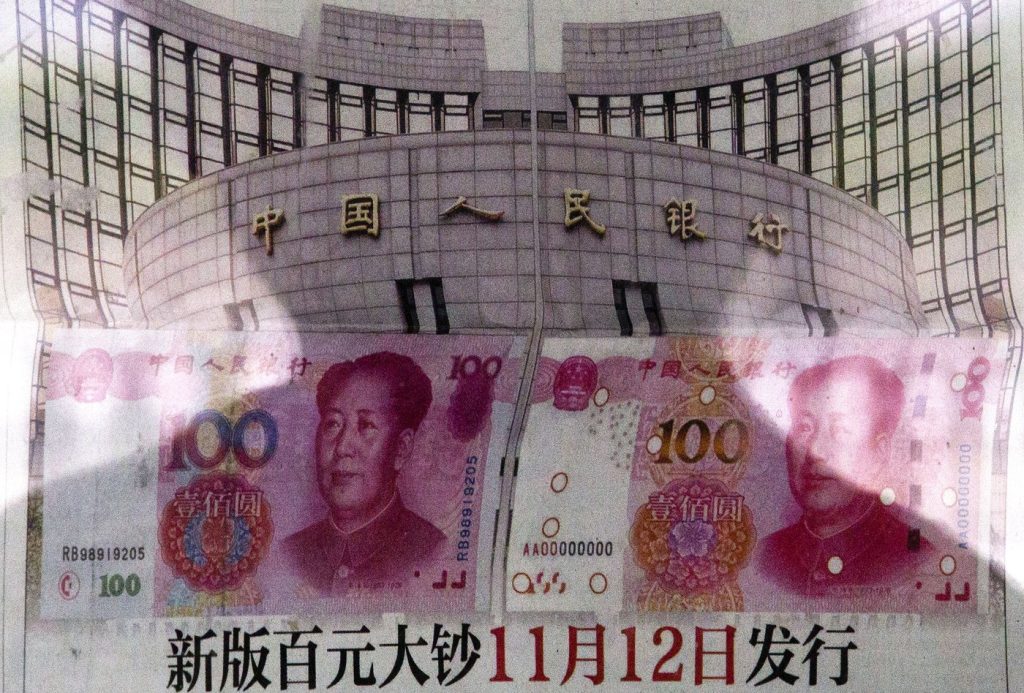BANGKOK (AP) China is aggressively pursuing the integration and global acceptance of its digital currencies, specifically the yuan, or renminbi. This initiative is fueled by a desire to reinforce China's position as the world's second-largest economy while challenging the dominant role of the U.S. dollar in international trade and finance. Despite this ambitious goal, there are significant hurdles ahead, including restrictions on access to Chinese financial markets and limitations on the yuan's convertibility, which impede its widespread global use.
While the regulatory environment surrounding stablecoins has already been established in Hong Kong, some Chinese experts advocate for the development of regulations to lay the groundwork for a possible stablecoin pegged to the yuan. As of now, officials from the People's Bank of China and the State Council Information Office have not responded to inquiries regarding a recent report that suggests the State Council is preparing a plan to internationalize the yuan, potentially including the introduction of a yuan stablecoin.
In the United States, stablecoin regulations are also evolving. President Donald Trump has emphasized the importance of adopting cryptofriendly policies, as evidenced by the recent signing of the GENIUS Act, which includes regulations pertaining to stablecoins.
Stablecoins, which are digital currencies pegged to traditional currencies like the U.S. dollar, serve as an alternative in scenarios where currency transactions can be cumbersome or expensive. Unlike cryptocurrencies such as Bitcoin, stablecoins are designed solely as a means of payment rather than as tradable investments. Typically, dollar stablecoins are traded at a one-to-one value against the dollar and are underpinned by reserves equivalent to that value, although they are issued by private institutions rather than central banks.
It's important to note that stablecoins differ from Digital Central Bank Currencies (CBDCs), which are digital forms of traditional currencies issued by central banks. The value of stablecoins remains anchored to the currency to which they are linked; however, critics are cautious, raising concerns that stablecoins can function as proxies for regular currencies, potentially bypassing traditional banking frameworks and safeguards, which could facilitate illicit activities.
China has taken a significant step forward by launching its own digital yuan, the e-CNY, on a trial basis in 2019. Companies like McDonald's have participated in its rollout, while China has all but eliminated the mining and trading of private, decentralized digital currencies like Bitcoin, actively promoting the use of the digital yuan instead. As electronic payments have become ubiquitous, the e-CNY's adoption within China has grown, with state media reporting a staggering 7.3 trillion yuan worth of transactions by July 2024.
Furthermore, China is extending its efforts to promote the e-CNY in Africa, aiming to bolster its business relationships on the continent. Despite these advancements, it's vital to distinguish the e-CNY from stablecoins; experts agree that a comprehensive regulatory framework is essential to ensure safe utilization of stablecoins and their seamless integration with banking systems.
In Hong Kong, where a unique financial market and legal system exist, a new stablecoin law came into effect on August 1. This legislation seeks to attract high-net-worth individuals interested in digital currencies, stipulating that any stablecoin linked to the Hong Kong dollar must be backed by equivalent reserves. As a prominent global duty-free port and financial hub, Hong Kong has often acted as a testbed for liberalizing China's financial markets. However, the issuance of a yuan stablecoin would necessitate tailored regulations to govern its use in Hong Kong.
Importantly, China's existing limitations on cross-border financial transactions remain a significant barrier to increasing the yuan's global stature. Despite being the sixth most active currency for global payments—accounting for 2.88% of payment shares as of June 2024—the yuan's potential as a global currency is curbed by stringent controls on foreign exchange.
Data from the Society for Worldwide Interbank Financial Telecommunication (SWIFT) identifies the yuan's usage peaking at 4.7% in July 2024. While it is increasingly becoming a choice for trade financing, comprising nearly 6% of such transactions, the lion’s share of yuan-based transactions still occurs within Hong Kong's financial sphere. In contrast, the U.S. dollar maintains a commanding presence, representing over 47% of global payment currency shares as of June, followed by the euro, British pound, Canadian dollar, and Japanese yen.










